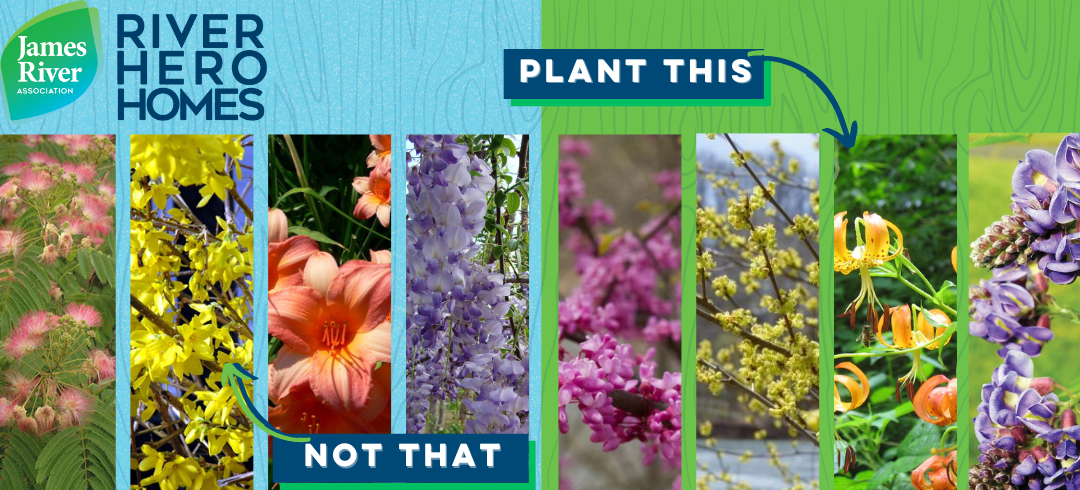Spring is the perfect time to celebrate native plants. What better way to embrace the season than by enhancing your landscape with these essential species! While non-native and invasive species offer little ecological value and can even cause harm to natural resources, native plant species are essential for supporting healthy, biodiverse ecosystems. Native plants provide food and habitat for wildlife including insects, local and migratory birds, and mammals. Native plants are also adapted to Virginia’s environmental conditions, requiring less water, fertilization, and application of herbicides and pesticides compared to non-natives – saving you resources and reducing the amount of polluted runoff entering our watershed. Below we’ve offered suggestions for native plant alternatives to common non-native and invasive species still commonly found in landscapes across Virginia. For more information on what regionally native plants to incorporate into your landscape this spring, be sure to reference the Digital Atlas of the Virginia Flora. Happy planting!
Trees
The Persian silk tree (Albizia julibrissin), commonly known as “Mimosa tree,” is an invasive species native to Asia. These trees are known for their pink flowers that resemble pom-poms. Silk trees spread easily and grow quickly, often displacing native plants that wildlife depends on.
Plant This! If you’re interested in adding a colorful fast-growing tree to your landscape, consider native Eastern redbuds (Cercis canadensis). These understory trees can reach ’35’ in height and feature deep pink flowers in the spring and heart-shaped foliage that turns golden yellow in the fall.
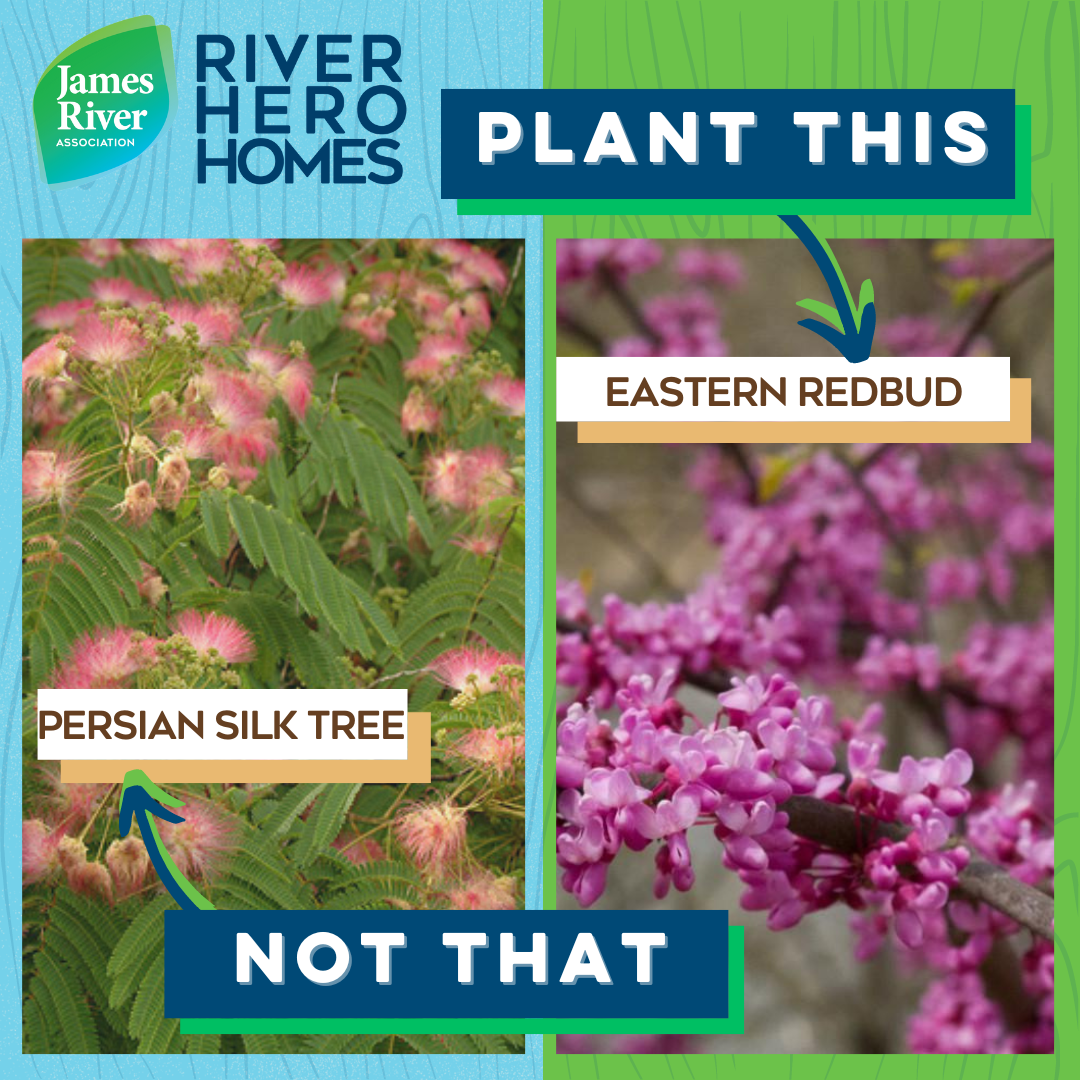
Shrub
Forsythia (Forsythia suspensa) is a non-native shrub that is known for its bright yellow blooms in early spring. However, once planted, Forsythia is extremely difficult to remove. This is due to its stoloniferous root systems, meaning that once a branch touches the ground, it can root and start another bush. This non-native species also offers very little wildlife value.
Plant This! A great alternative to Forsythia is native Northern spicebush (Lindera benzoin). Not only does Spicebush offer yellow flowers that bloom in March and April, but it also grows red fruit throughout September and October. Spicebush is a larval host for the Eastern tiger swallowtail (Papalio glaucus) and the Spicebush swallowtail (Papalio troilus). Spicebush fruits are also a food source for birds, including the Wood thrush (Hylocichla mustelina).
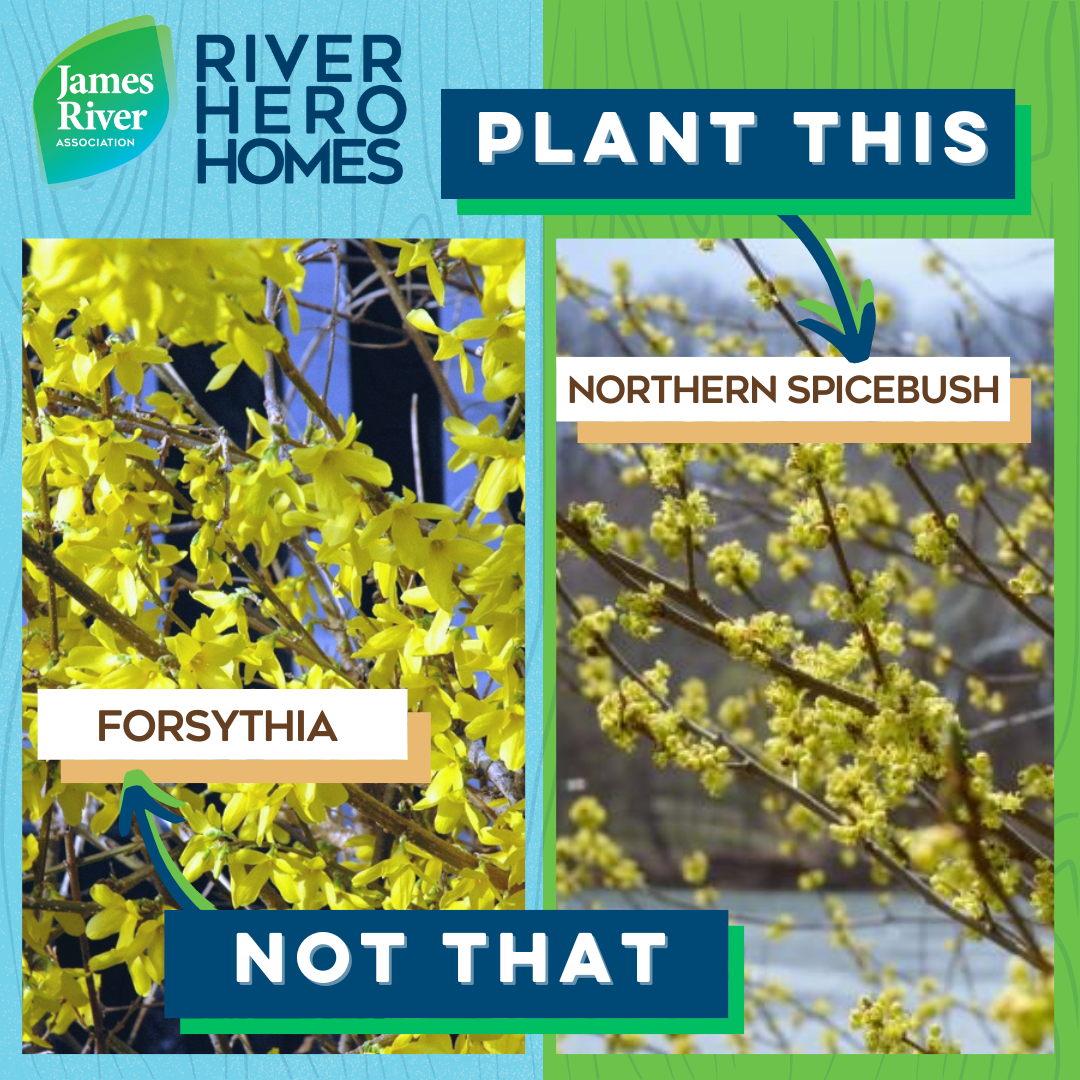
Herbaceous Plant
The Orange daylily (Hemerocallis fulva) is an herbaceous plant that has become popular due to its bold flowers and hardiness. However, it is invasive in Virginia and can pose an ecological threat once it spreads and establishes in natural areas. Established daylilies spread to form dense patches that can displace native plant species. The removal and ongoing control of this plant is a challenge due to its thick tubers.
Plant This! Consider planting the native Turk’s cap lily (Lilium superbum) this spring. These plants offer vivid red, orange, and yellow flowers from July through September. The Turk’s cap lily is also the largest lily in North America, with up to 40 flowers recorded on a single plant! These flowers offer wildlife value to pollinators like the Ruby-throated hummingbird (Archilochus colubris) and the Eastern tiger swallowtail (Papalio glaucus).

Grass
Although technically not a grass, Creeping liriope (Liriope spicata) is often used for edging or as a ground cover. Liriope is commonly called “Monkey Grass” or “Lilyturf” and was introduced to the United States from Asia. Once this non-native species spreads, it is difficult to control and remove.
Plant This! If you’d like to add a colorful ground cover to your landscape, consider native Golden ragwort (Packera aurea). Golden ragwort is a perennial plant that can suppress weeds, spread steadily, and produce yellow flowers in the spring. It also attracts a variety of species of bees and butterflies.
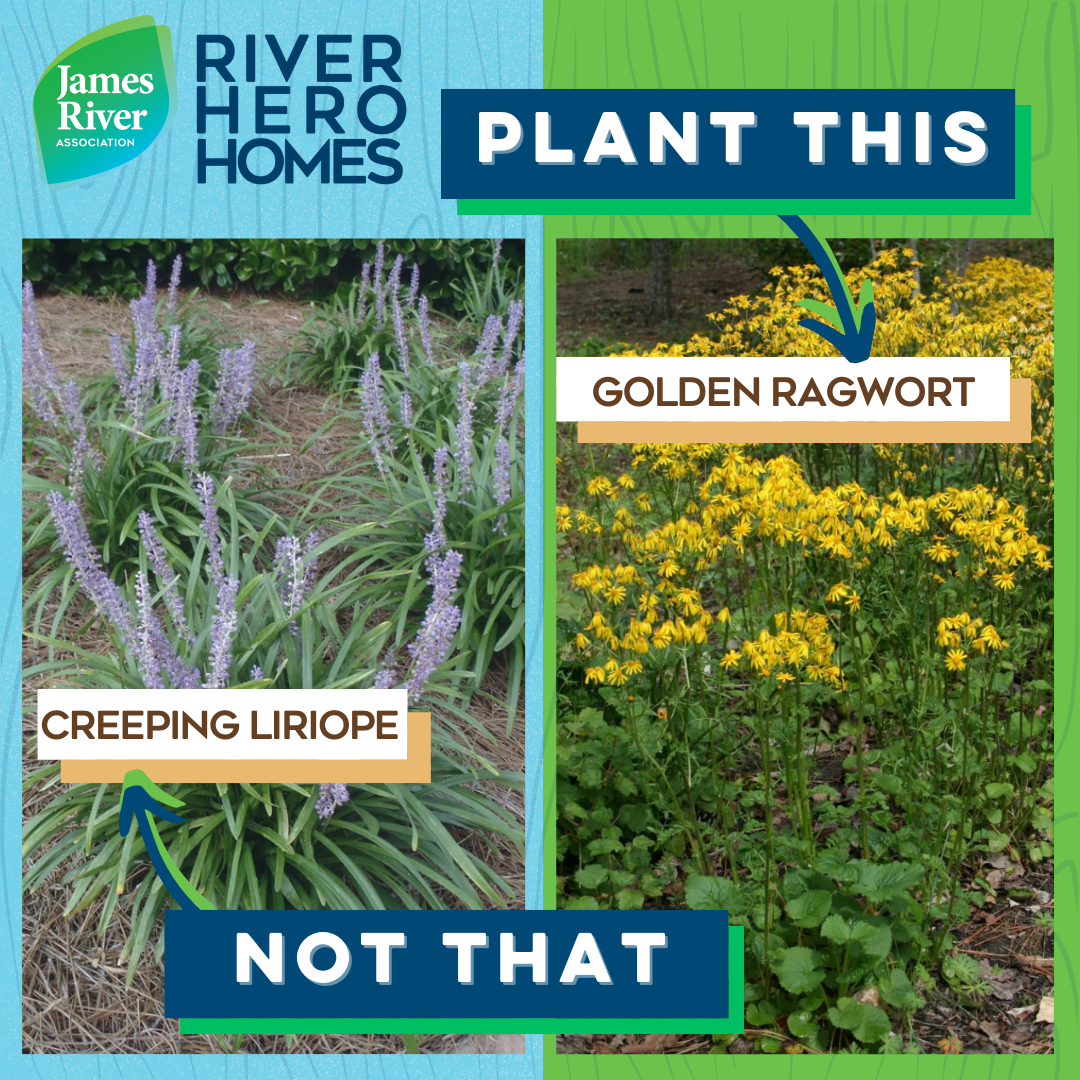
Vine
Despite being an invasive plant species, Japanese wisteria (Wisteria floribunda) is a woody vine that has become popular among homeowners and landscapers for its fragrant springtime flowers. However, this vine has been known to twine tightly around host tree trunks, resulting in death by girdling. Ground growth often results in dense thickets that outcompete native plants.
Plant This! Not only are native American wisteria (Wisteria frutescens) very similar in appearance to Japanese wisteria, but they are also a less aggressive vine choice for landscapes. This native option offers lilac flowers during April and May, attracting butterflies and serving as a larval host for different skipper species.
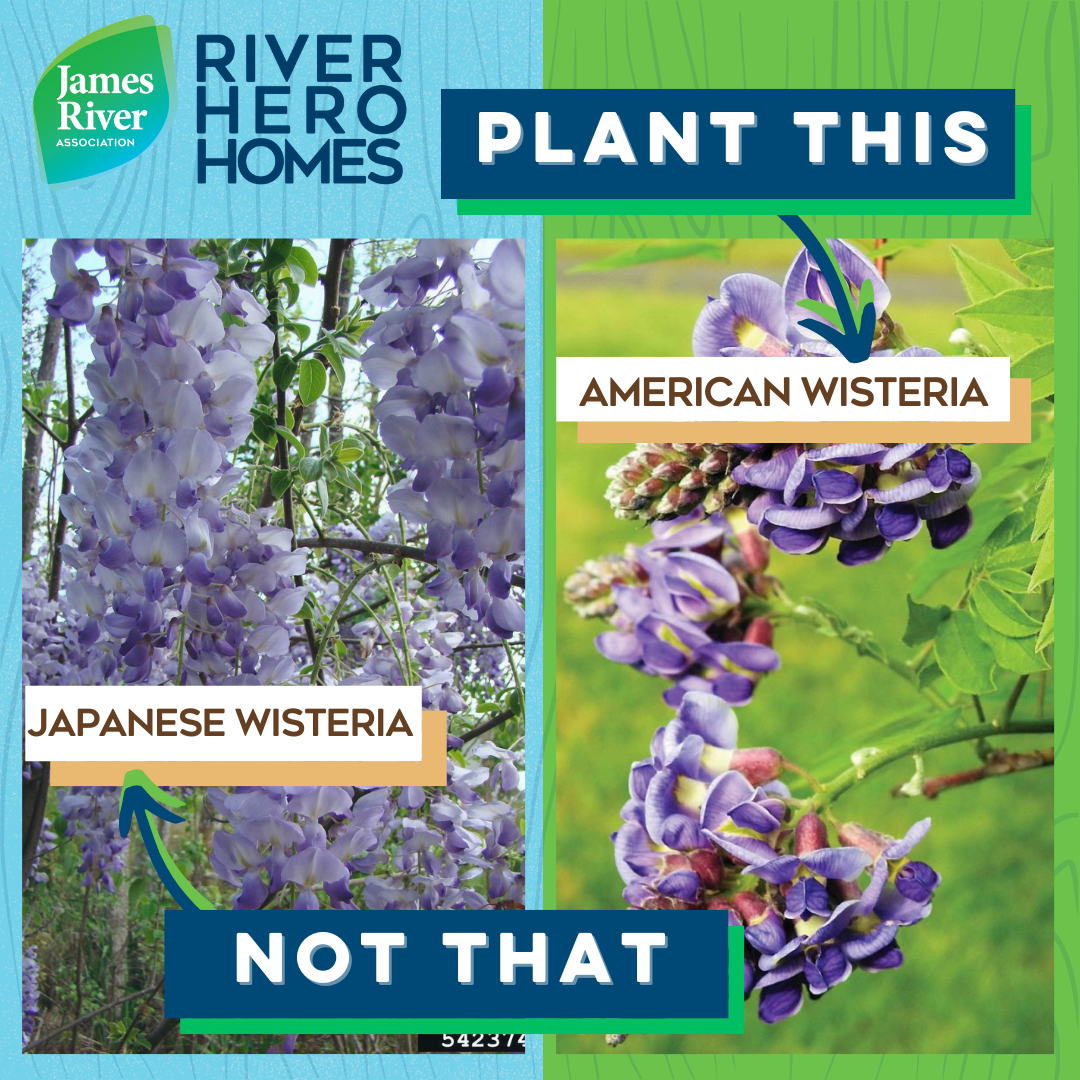
You can incorporate native plantings into a bayscape, rain garden, or vegetated filter strip, use them as your foundation planting, plant a windbreak with evergreens, or plant a buffer along the stream that runs through your property. Planting natives and avoiding invasive plants could qualify you to become a River Hero Home member! Learn more about the program, and how you can be a hero, at the link below!

